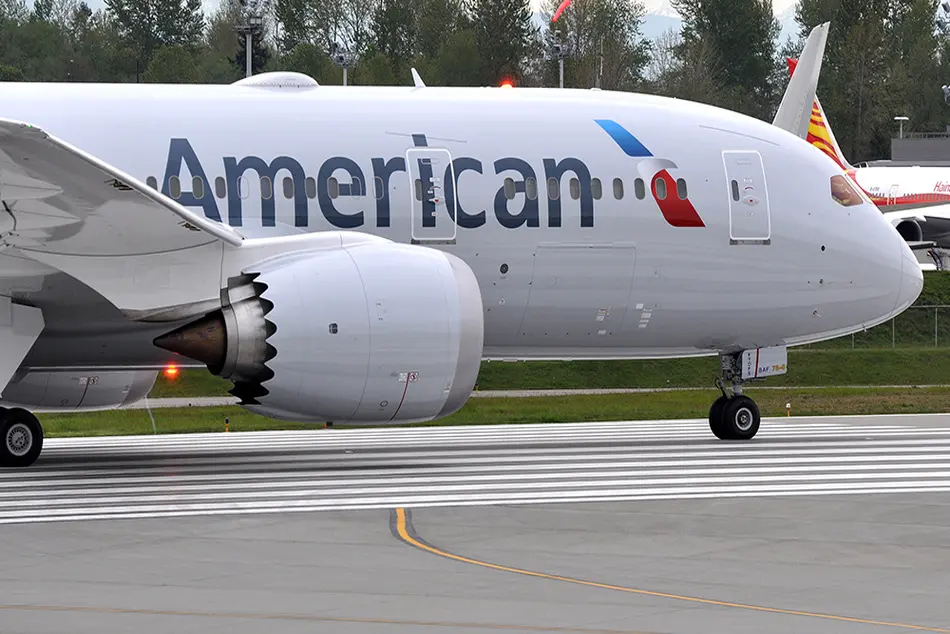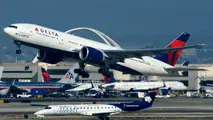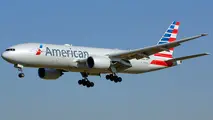Make America Welcoming, Its Namesake Airline Urges
Facing an uncertain economic environment, American Airlines is calling for policies and action that spur demand for travel, both domestically and abroad.

Facing an uncertain economic environment, American Airlines is calling for policies and action that spur demand for travel, both domestically and abroad.
“This starts with making America a welcoming destination for international travelers,” CEO Robert Isom said during the carrier’s 2025 first quarter (Q1) earnings call on April 24. He cited upcoming events including FIFA World Cup 2026, of which it is a sponsor, describing the travel industry as a critical engine for the U.S. economy. Supporting its growth also means “expanding visa-free travel, lowering visa processing times and expediting the deployment of new technologies to make travel more seamless and secure,” he told investors.
Air traffic control (ATC) modernization efforts will also be key, he stressed, describing the aging system as “likely the biggest limiter to growth in the industry as we look out over several years.”
Seeing positive momentum as it exited the fourth quarter of 2024, American is now adjusting to the uncertain environment already cited by its peers and taking “a cautious, even a negative approach to growth” in the year ahead. It is prepared to reduce off-peak flying, retire aircraft, defer deliveries and return leased assets, as conditions may warrant.
“We will remain nimble,” said Isom, intending to “efficiently reduce capacity without jeopardizing the quality of our core network.” He added, “uncertainty is what we’re living with now.”
American joins a growing list of carriers in pulling its guidance for the full year, until an economic outlook becomes clearer. In the second quarter (Q2) it expects capacity to be up approximately 2%-4% year-over-year. It would not guide past Q2.
“I’ll tell you right now we have a negative bias to all capacity as we go forward,” Isom said.
Like its mainline peers, American is seeing weakness in the domestic main cabin from its most price-sensitive customers. International travel from the U.S. remains strong, though an outlook beyond summer is uncertain. About 75% of its international is sold as U.S. point of sale, a tick below United Airlines’ and Delta Air Lines' 80%.
For American, business travel appears healthy; the carrier describing it as “vibrant,” suggesting that it may be in a better position to notice improvements due to its sales and distribution recovery efforts. In 2024, it reversed a new corporate distribution strategy it called a tactical misstep.
“As long as the economy continues to support business traffic, we’re going to continue to grow business traffic in the second quarter and we should grow it faster than the other airlines because of the progress from our distribution efforts,” said Steve Johnson, vice chair and chief strategy officer. Currently, uplift from its corporate share recapture is largely being overwhelmed by weakness in main cabin demand, as well as in government business which “has fallen off considerably as well,” Isom said.
Tariffs continue to be a major question for U.S. airlines, as they assess the impact to their aircraft deliveries and broader supply chain. In the year ahead, American expects to take delivery of 40-50 new aircraft, including Airbus A321XLRs, airframes it now expects toward the end of the year. “We’ve got to do some work before then,” Isom said. But the carrier does not have any “near-term” deliveries that could be subject to tariffs, he noted, taking issue with the potential for extra charges.
“Aircraft cost too much already,” said Isom. “I don’t want to pay any more for aircraft. It doesn’t make sense ... Certainly this is not something we would intend to absorb, and I’ll tell you, it’s not something that I would expect our customers to welcome. So, we’ve got to work on this.”
The airline CEO anticipates, in working with the U.S. administration, that a framework can be achieved that ensures aviation in the U.S. is competitive.
In Q1, American recorded total operating revenues of $12.6 billion, down 0.2% year-over-year on a 2.1% uptick in operating expenses. Revenue took an estimated $200 million hit from the fatal American Eagle Flight 5342 crash in Washington, D.C., in January, and the carrier posted a net loss of $473 million for the quarter, widened from a net loss of $312 million in the year-ago period. The airline ended Q1 with $10.8 billion in total available liquidity.
American’s total unit revenue was up 0.7% year-over-year on strength in international. The carrier noted continued growth in premium and loyalty, with spend on its co-branded credit card up by 8%—believing it is “on track” for targeted cash remuneration growth of 10% annually.
Looking ahead, American’s guidance for the second quarter (Q2) forecasts revenue to be in the range of down 2% to up 1% versus the year-ago period, as it anticipates softness in the domestic main cabin to continue. Partially offsetting this challenge are expectations that long-haul international and premium bookings will outperform on a year-over-year basis. American forecasts adjusted operating margin for the coming quarter to be 6%-8.5% versus Q2 2024.
Despite current headwinds, American is optimistic that improvements are ahead. There is an awareness of sentiments surrounding uncertainty, Isom said, describing the U.S. administration as wanting to get back on track as soon as possible.
“Nobody really relishes uncertainty,” Isom said. “Certainty will restore the economy, and I think it will restore it pretty quickly.”



